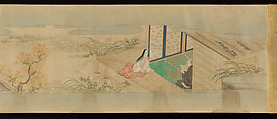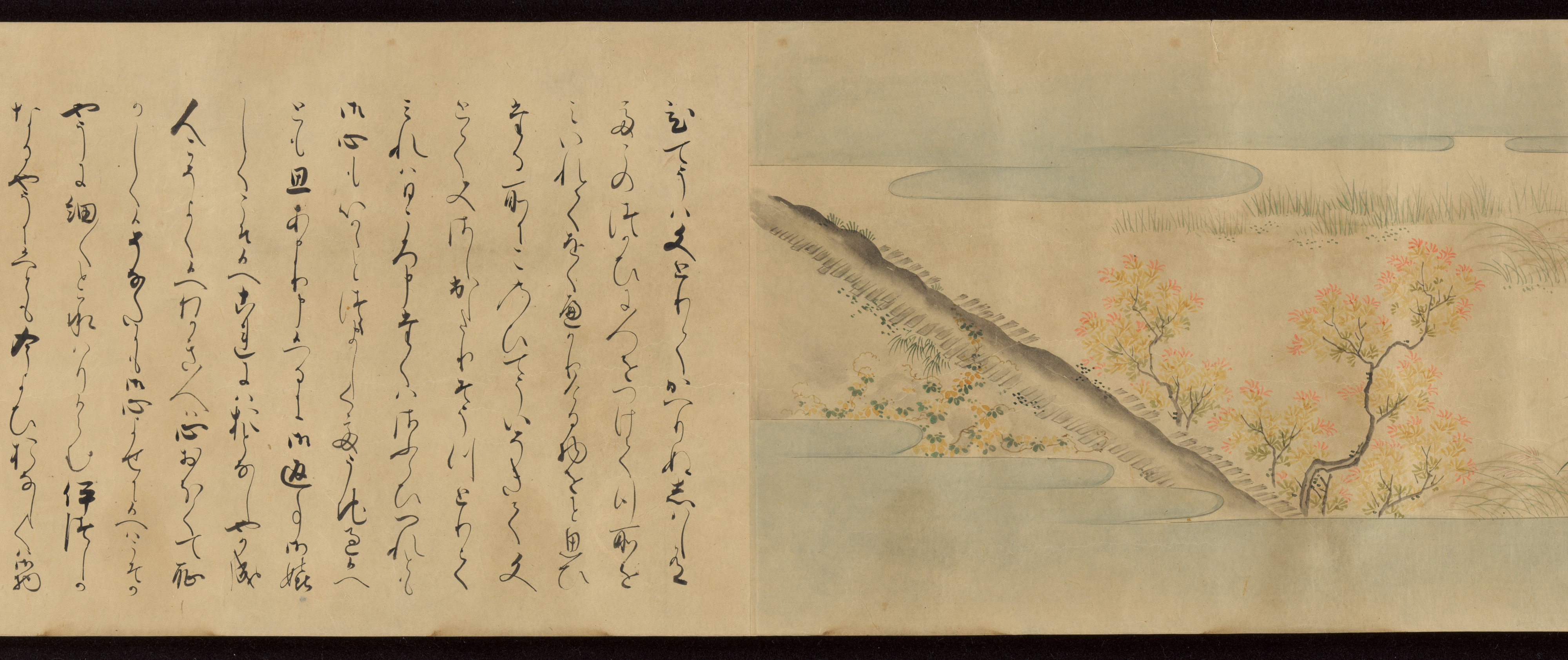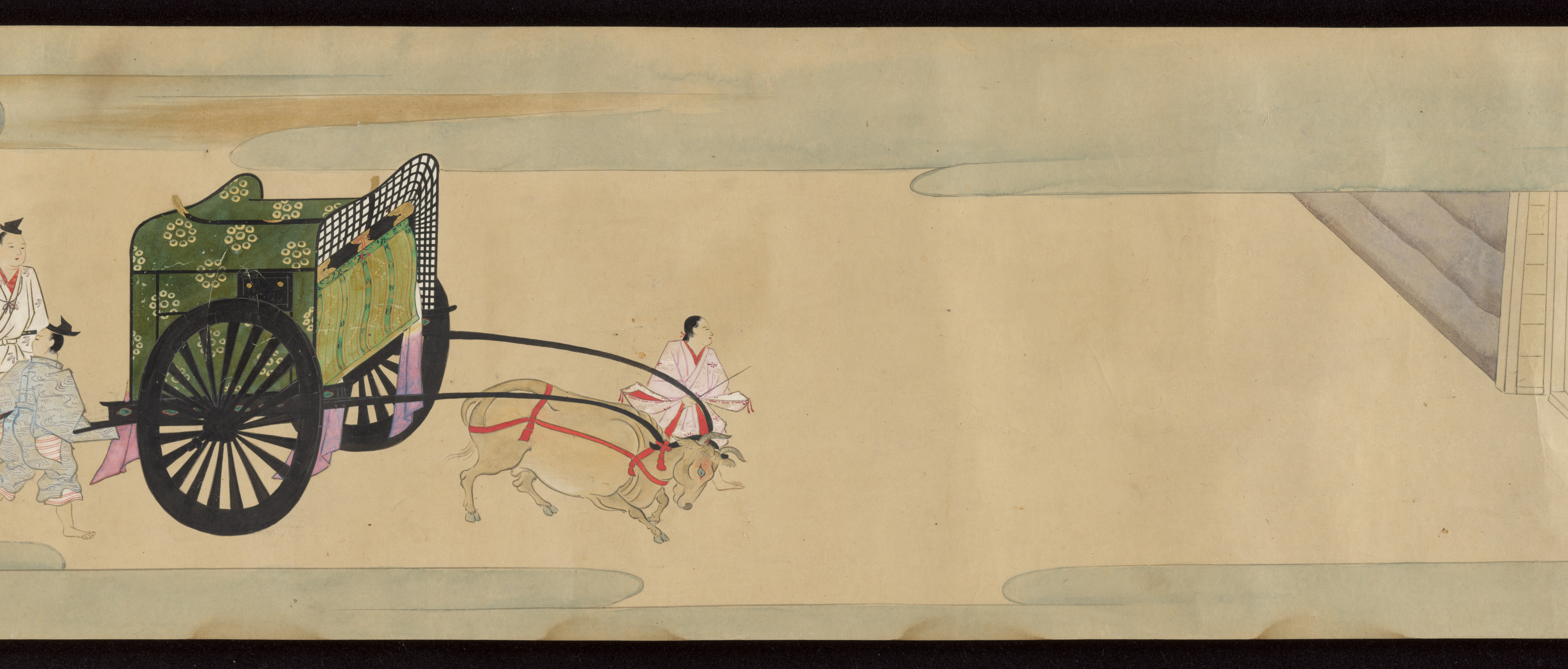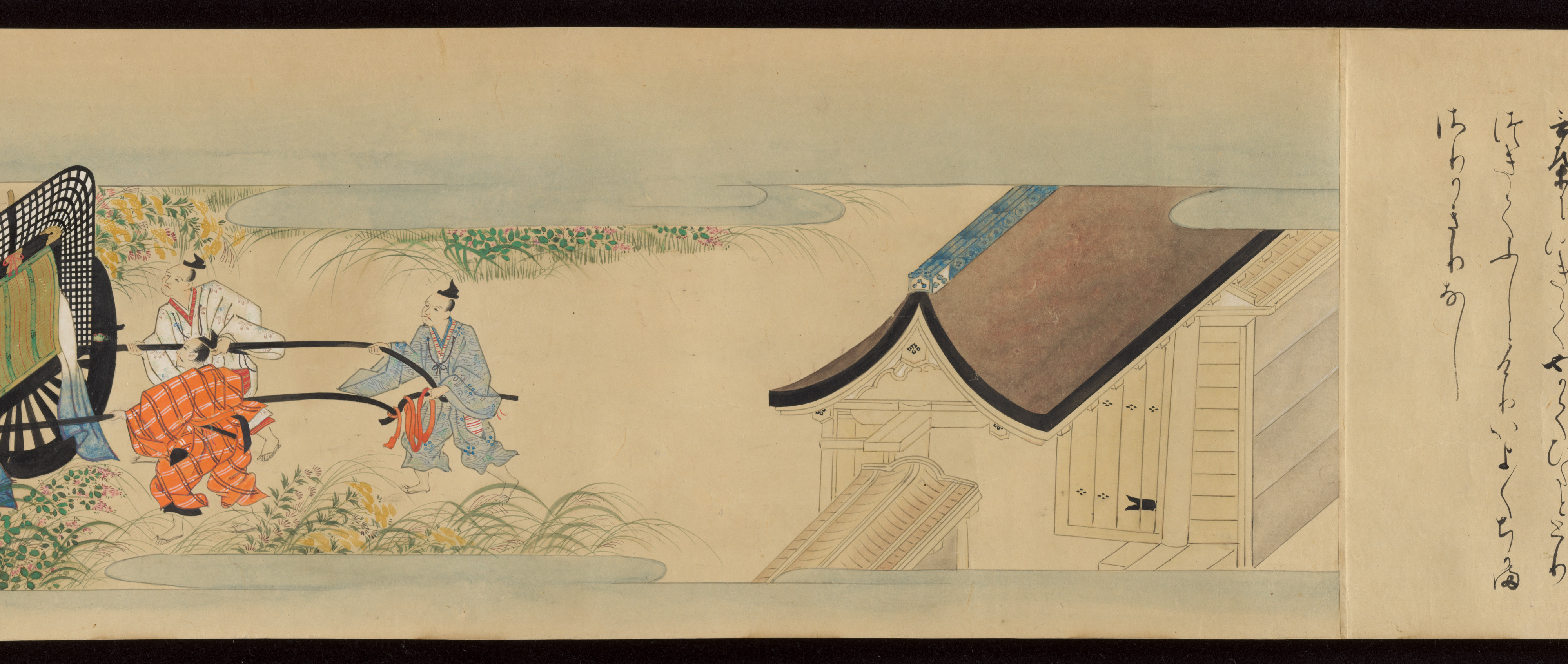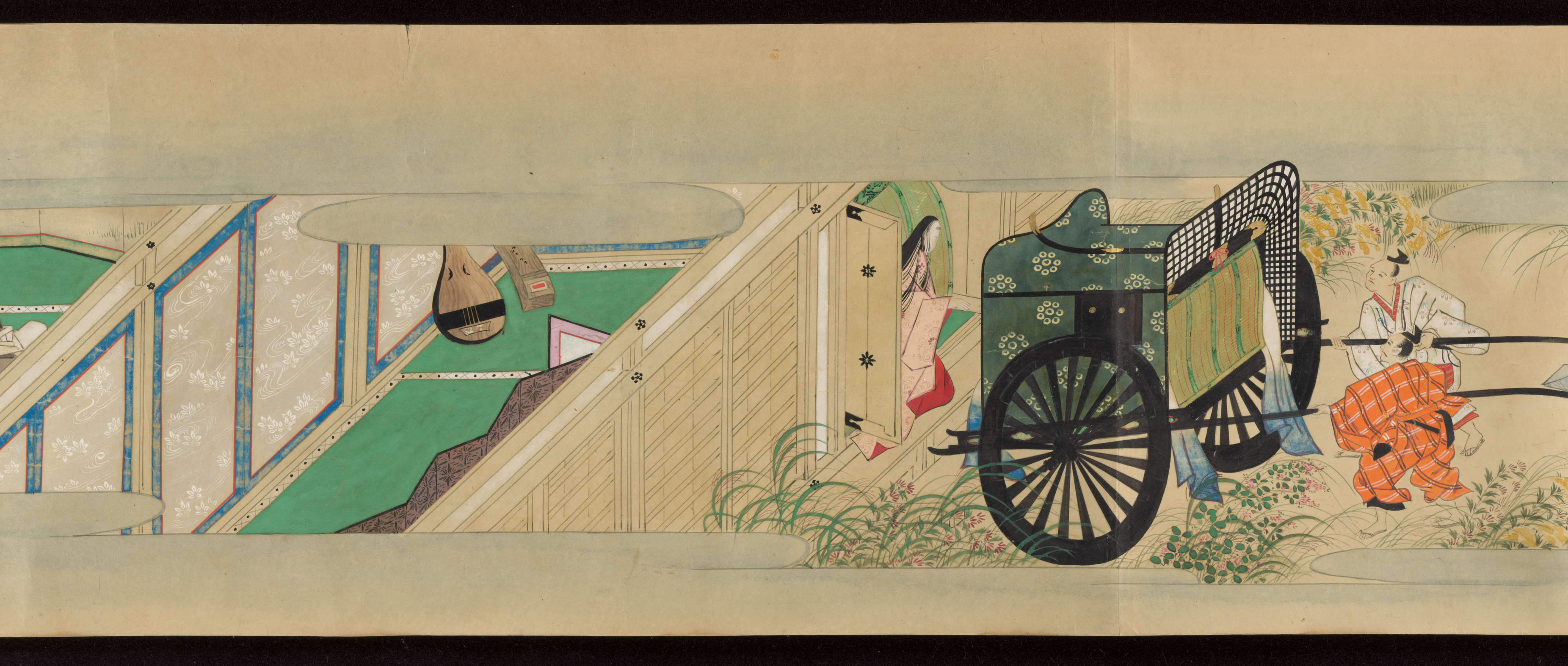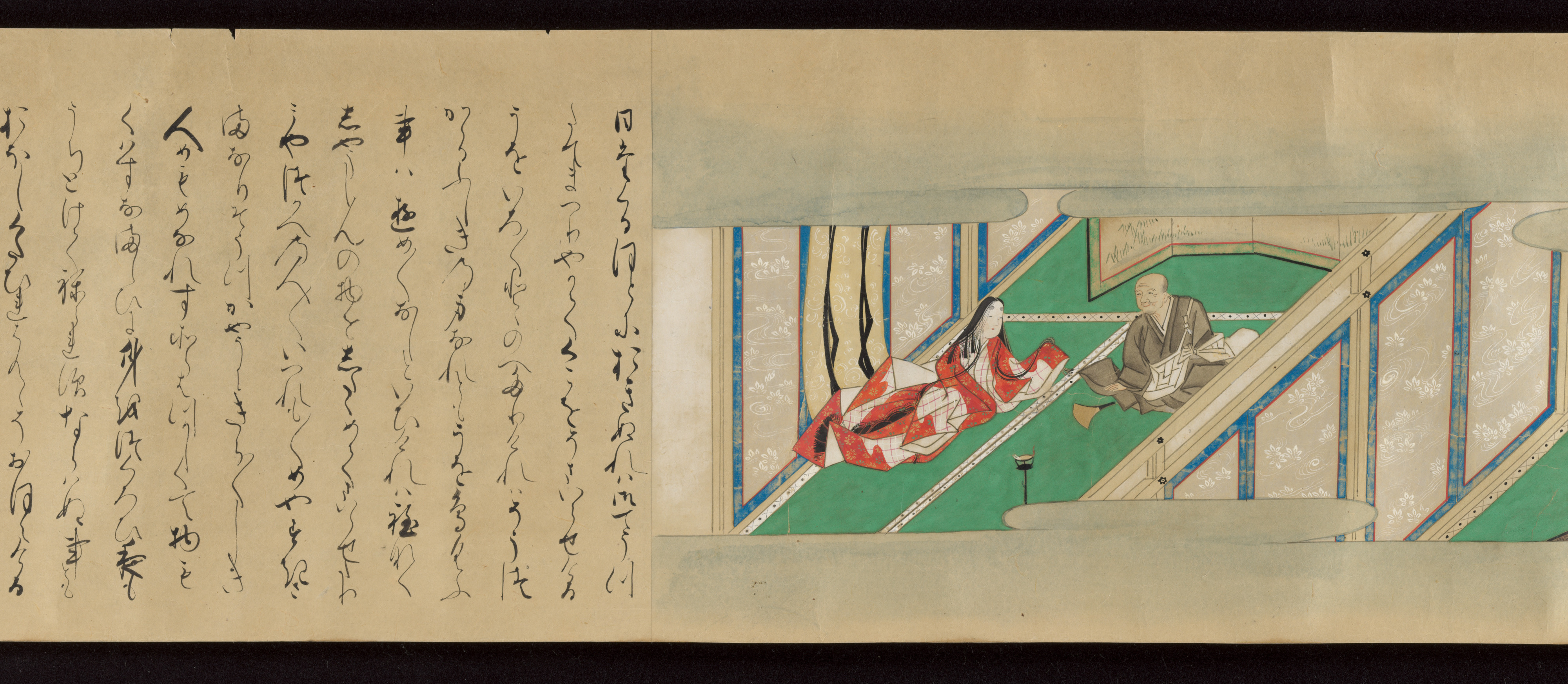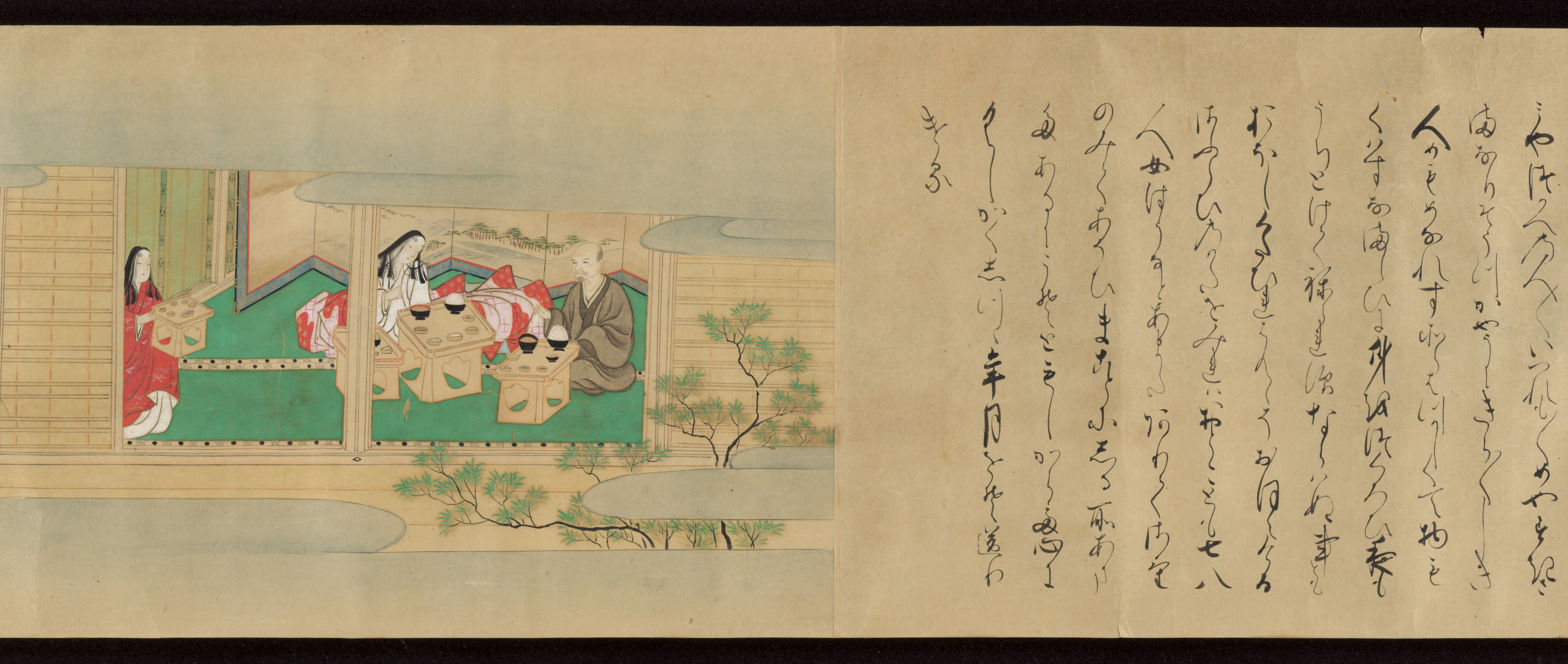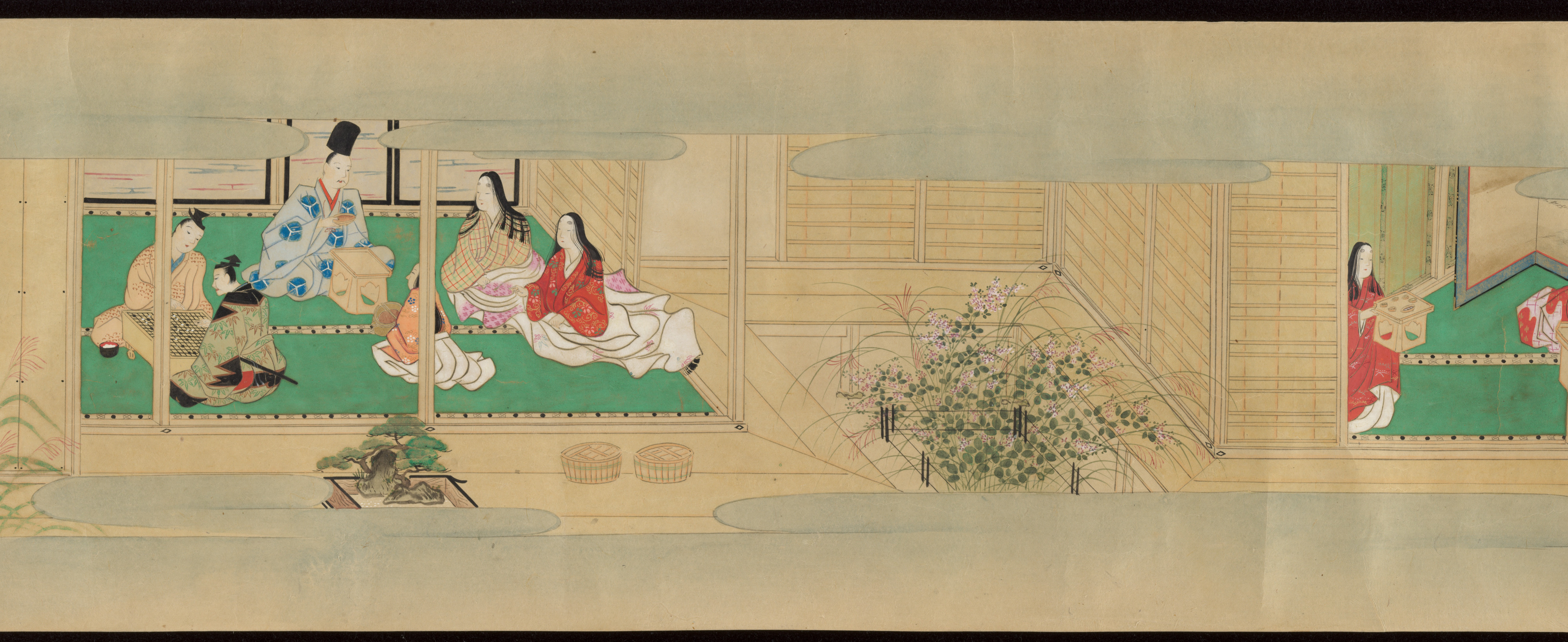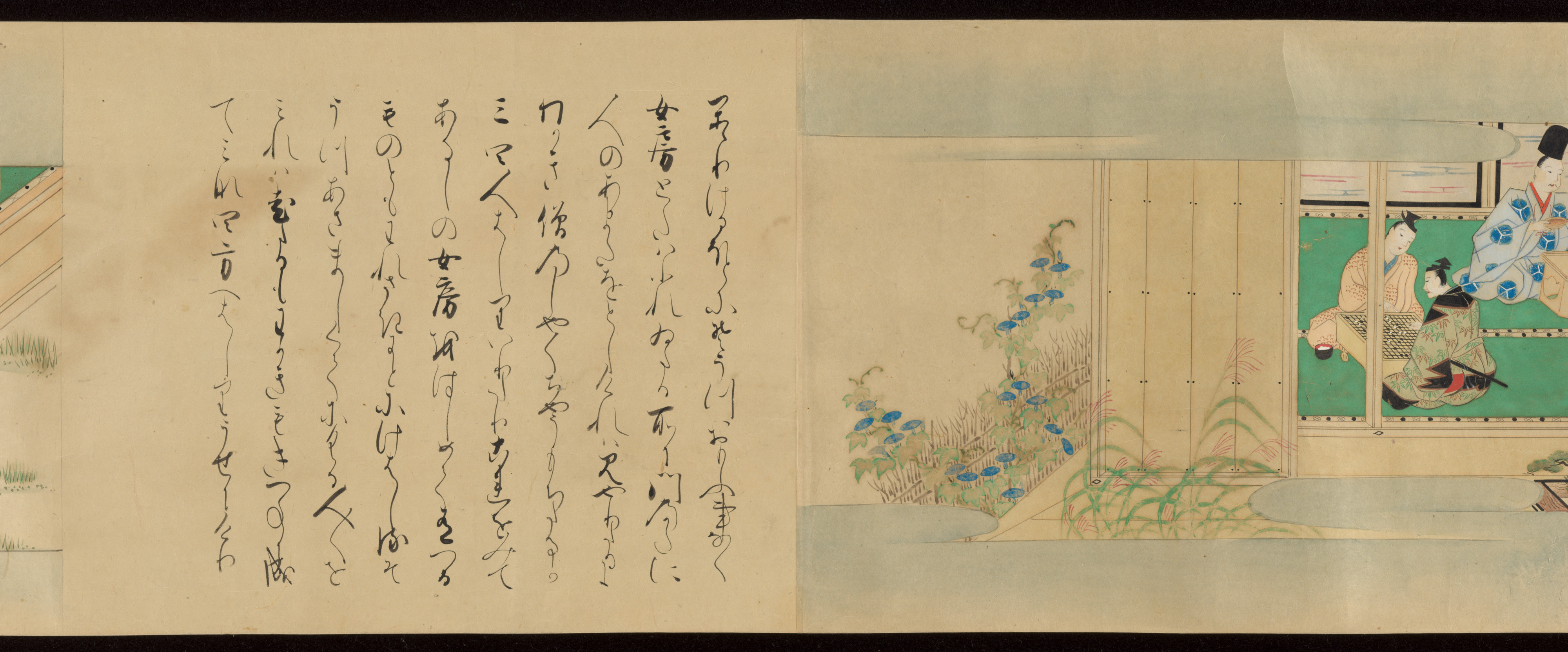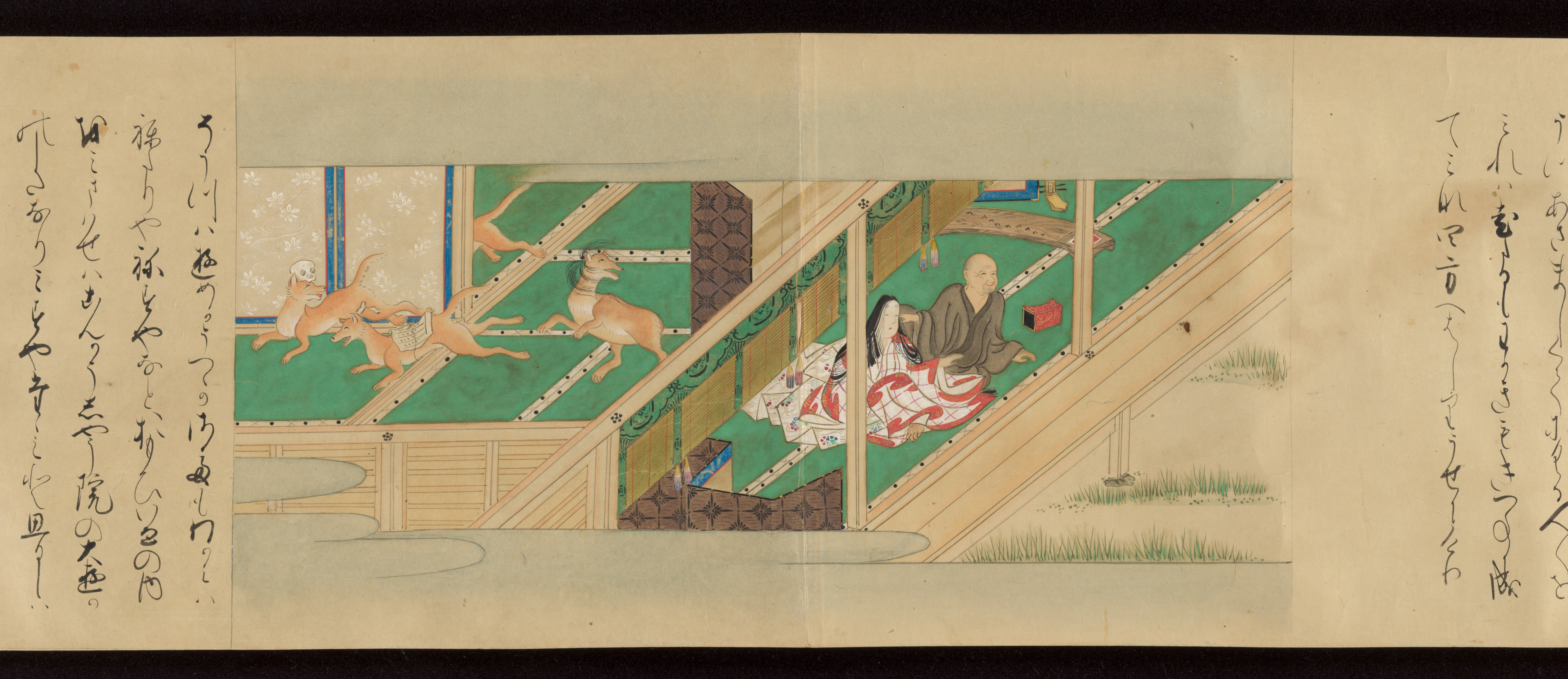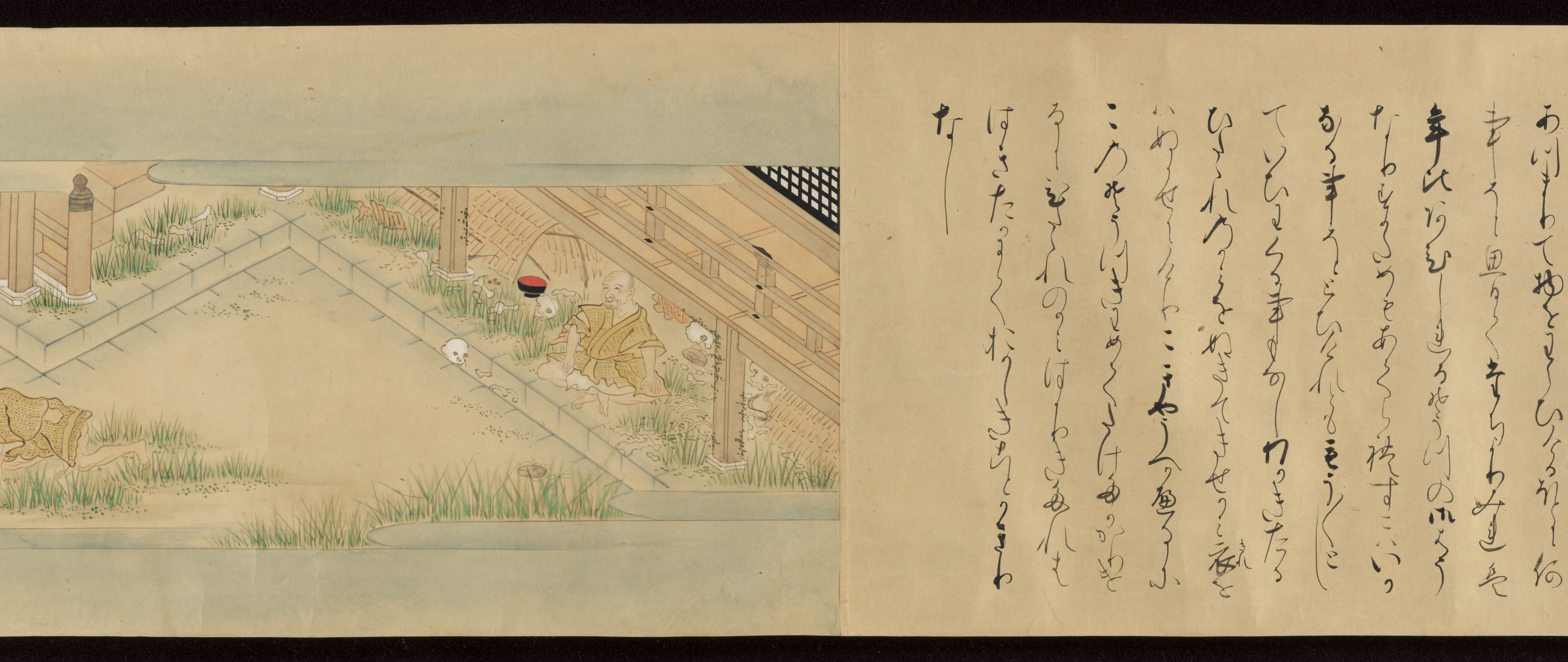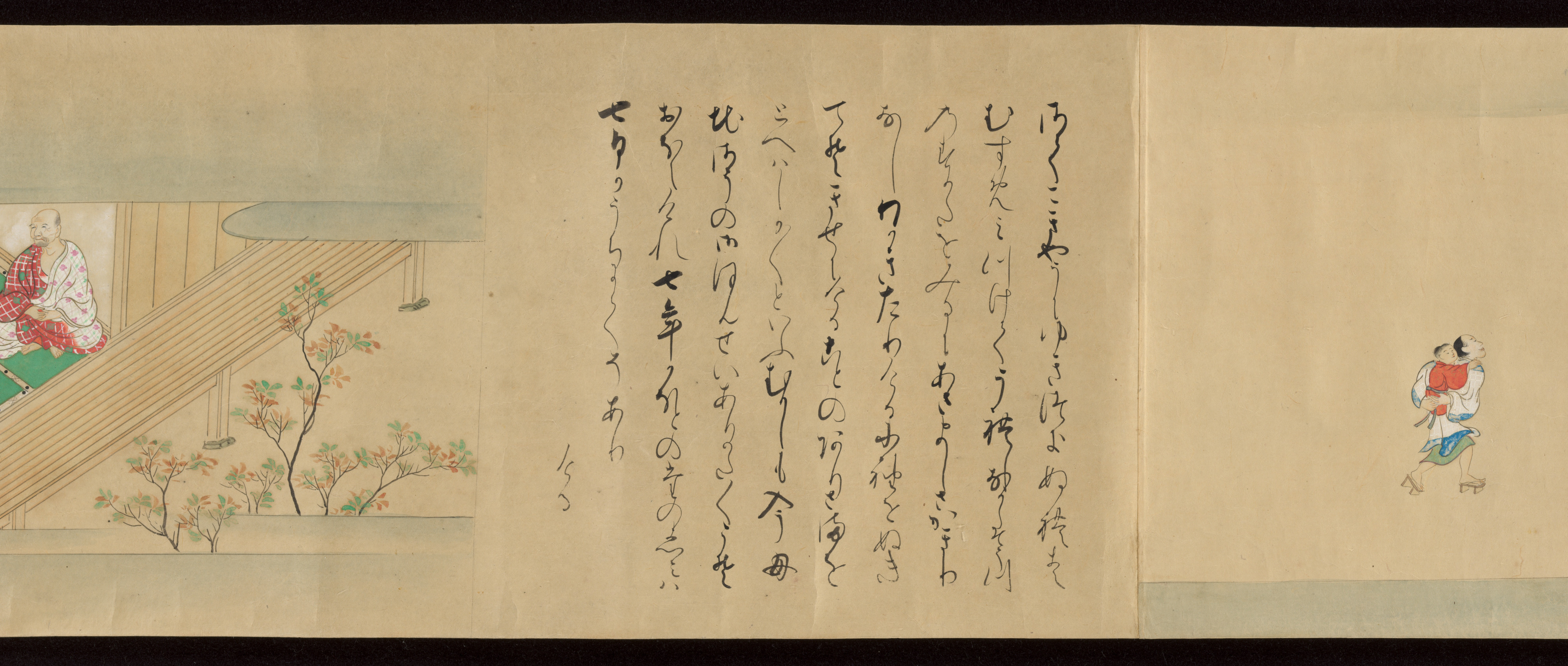Tale of the Fox (Kitsune no sōshi)
Unidentified painter and calligrapher
Not on view
Illustrated handscrolls (emakimono), with alternating sections of texts and illustrations, have been used through the ages in Japan to create biographies of the Buddha and famous monks, courtly literary tales such as The Tale of Genji, and popular folk tales (otogizōshi, literally “companion tales”), often with a didactic motive, as is the case here. This illustrated handscroll presents The Tale of the Fox (Kitsune no Sōshi), which relates the preposterous events surrounding a Buddhist monk being seduced by a beautiful woman, only to discover that she is the spirit of a mischievous fox. Even though the monk had supposedly taken vows of celibacy, he could not resist the temptation to indulge in carnal and sumptuary delights. Aimed at children of all ages, the moralizing motive of the tale is to admonish readers not to be tempted by worldly comforts to the detriment of an upright life.
Unusually, a prefatory text section is absent here, though it seems that various recensions of the illustrated versions of this tale all follow this same precedent. After the opening scene, which lacks an accompanying text, subsequent sections begin with a text passage followed by an illustration.
Opening section (no preceding text):
A Buddhist monk receives a letter expressing amorous intentions from a mysterious lady, and she pays a visit. She is garbed in the robes of an aristocrat.
Section 2:
The woman invites the infatuated monk to pay her a visit, and the monk is conveyed to her mansion in a splendid ox cart, escorted by a trio of servants.
Section 3:
Befitting a lady of rank, her mansion is luxuriously appointed, with deluxe furniture and an array of musical instruments.There are numerous male and female attendants, all of whom seem to enjoy indulging in feasting and drinking. The monk, who is seduced by the splendor of such surroundings, succumbs to the temptation to enjoy a decadent lifestyle.
Section 4 (text but no accompanying illustration):
The monk spends what he feels are months and years there until, according to the accompanying text, one day he hears someone pounding at the gate, and he lets in a few young Buddhist monks who are wielding shakujō, staves topped with metal rings carried by itinerant monks. The scene of the monks was either removed from this scroll or maybe the artist decided to leave it out. The scene survives in a later version of this Tale in the Waseda Library. This small section seems to be the only missing illustration.
Section 5:
Upon seeing the arrival of the monks, the lady of the house and all her servants suddenly flee in great alarm. The astonished priest then sees them transform themselves into foxes as they scamper away in all directions.
Section 6:
Stupefied, he discovers that, rather than ensconced in a magnificent mansion, he is crouched under the floor of the main building of the Kongō Shoin, a Buddhist temple in Kyoto. What he had imagined to be reed blinds and tatami mats were nothing but pieces of rough matting made of straw and reeds. The musical instruments he hallucinated were horse and cow bones, and the serving platters and dishes were only broken saddles and skulls. He discovers that his clothes were patched together pieces of old and dirty paper, and that his whole appearance was so haggard and ridiculous that the little boyswho were playing nearby clapped their hands and started to dance with glee when they caught sight of him crawling out from under the temple building.
A samurai, who knew the monk and who happened to be passing by, stopped to see what all the ruckus was about. When he asked the monk what had happened, the monk was speechless. The samurai removed the rags the monk was wearing and gave him his own upper robe, but because the monk was so tall his bare legs remained exposed. Dressed like this, he finally arrived back at his home village. Although he believed he had been seven years in the mansion, he soon learned that the he had spent only seven days living under the temple. While he had been deceived by fox spirits, the Bodhisattva Jizō, had saved him.
Due to rights restrictions, this image cannot be enlarged, viewed at full screen, or downloaded.
This artwork is meant to be viewed from right to left. Scroll left to view more.
